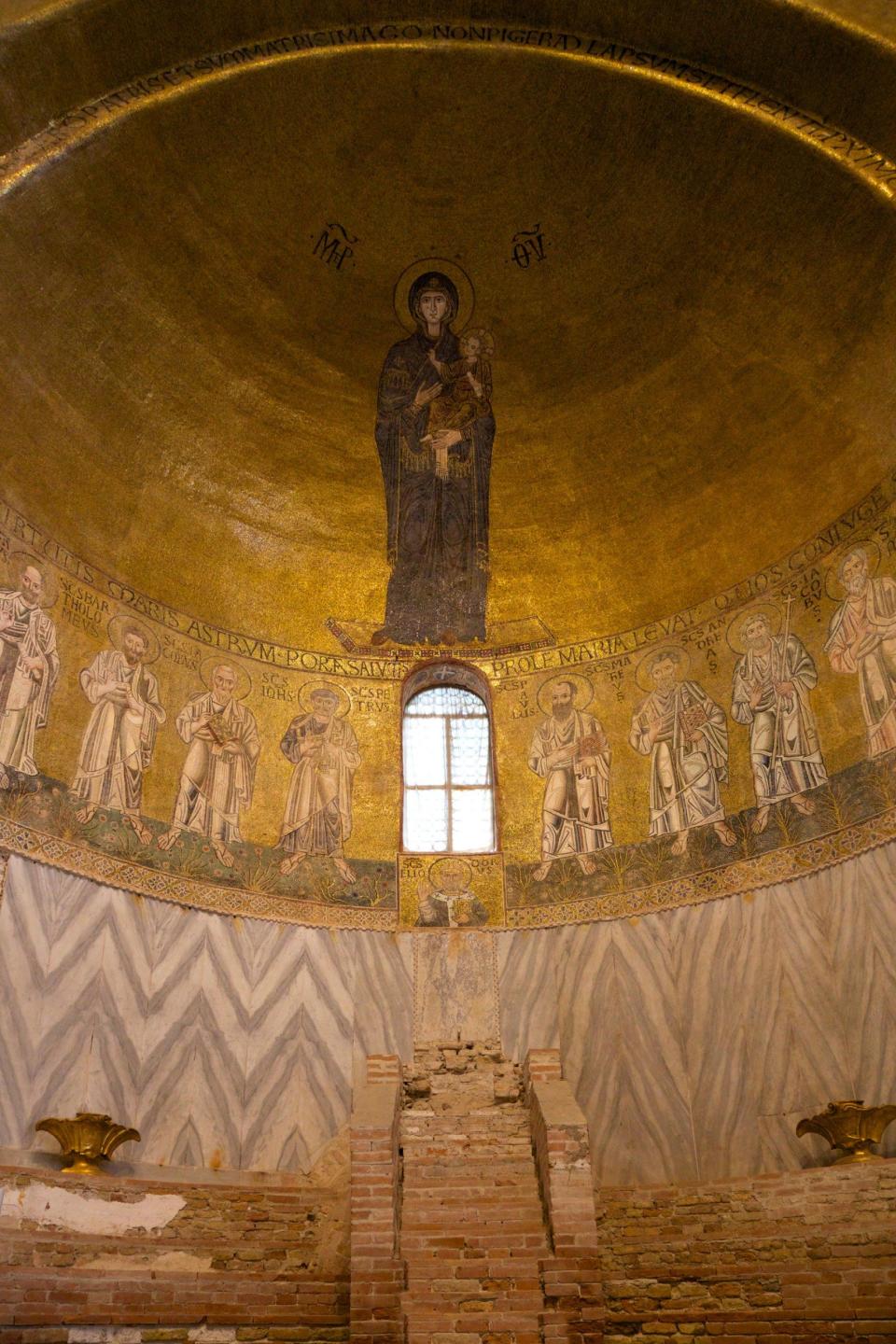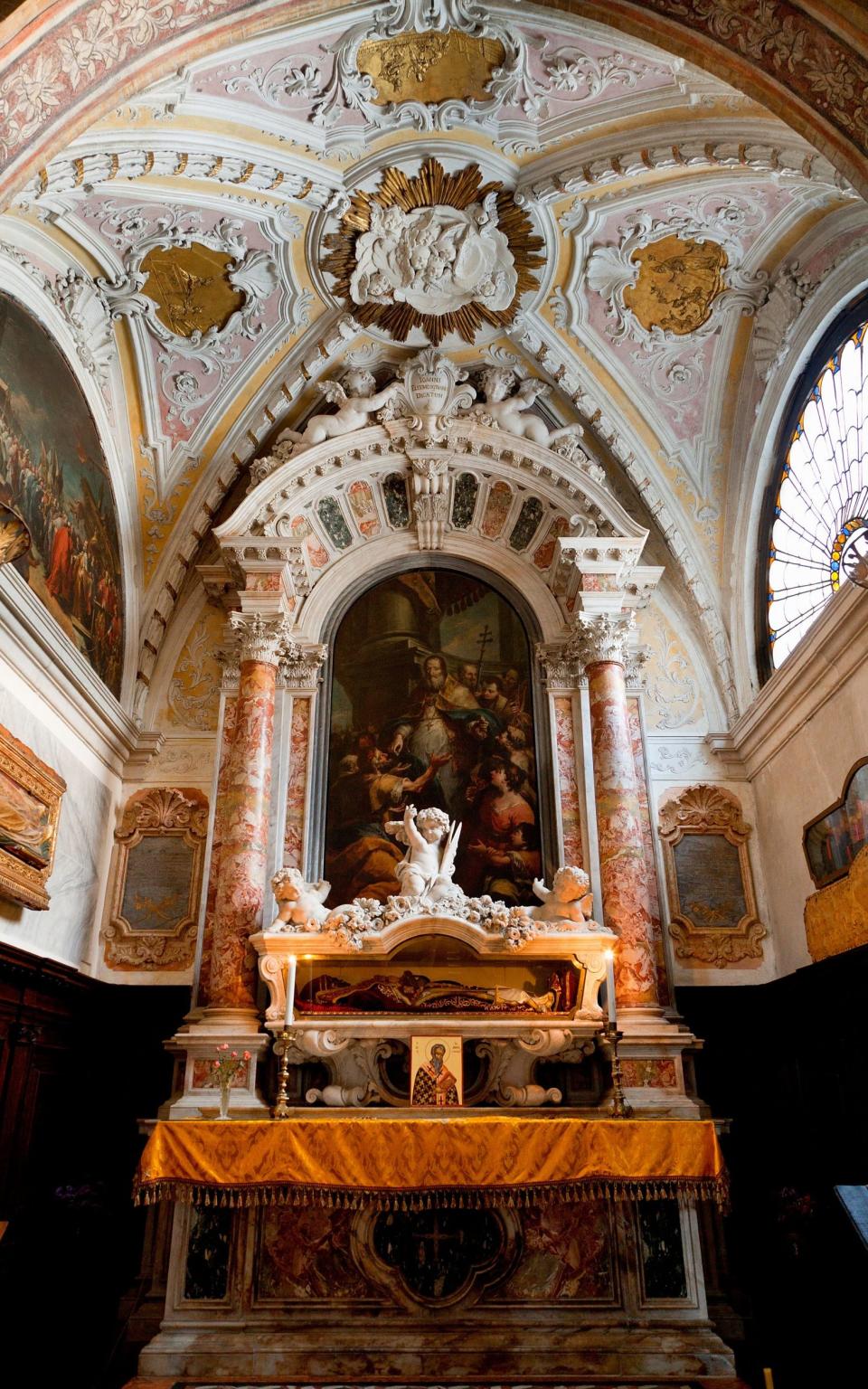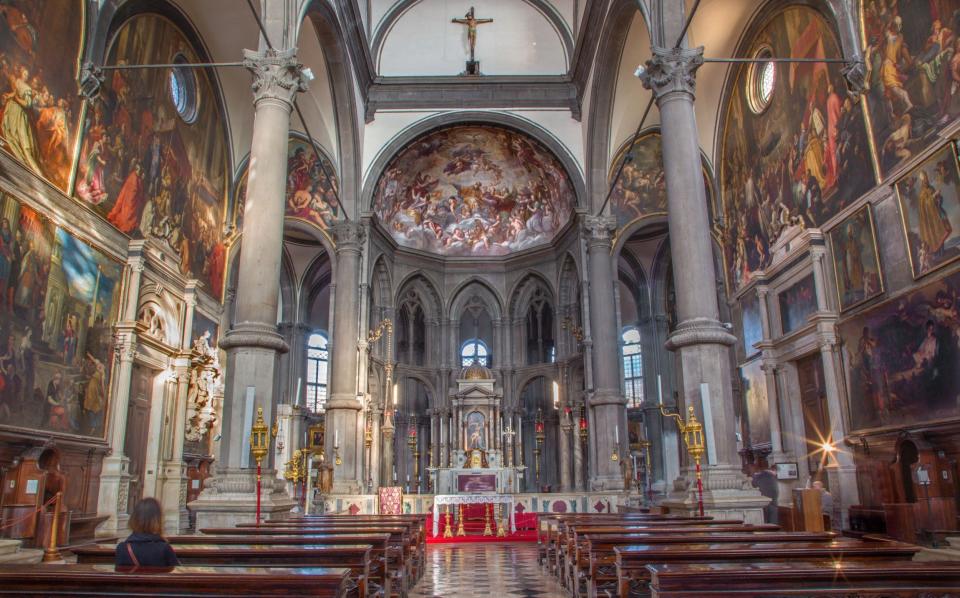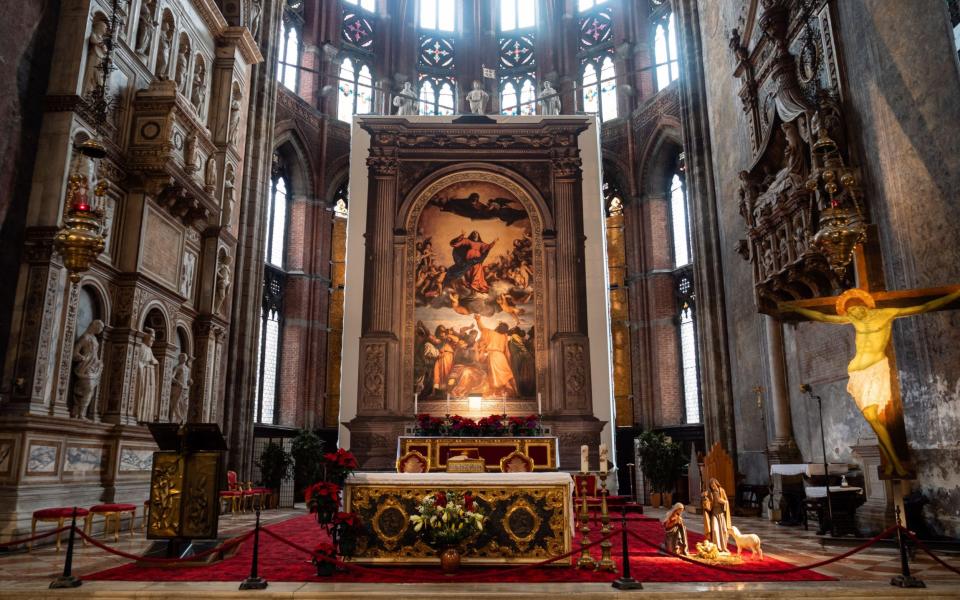Venice has always been a busy city. There were complaints about the noise and crowds centuries ago. Although I love the place today, the sheer number of other visitors can be troublesome. Unless you know how to get away from your fellow tourists.
Fortunately, that’s not difficult, even if the line to enter San Marco snakes away into the distance and there’s barely room to move on the main routes from the station to the Rialto and the Piazza. This is partly because Venice is not only beautiful, but also bigger than you would think. The dense maze of streets and canals has an extraordinary ability to absorb people, which is not surprising considering that this was one of the largest cities in medieval Europe.
And if you plan your escape carefully, you can unearth some of Venice’s most beautiful works of art at the same time. Here are 10 lesser-visited sights that are home to beautiful masterpieces that you can enjoy in peace.
Torcello
If you want to get an idea of what Venice looked like when it first started, go to one vaporetto trip across the lagoon to Torcello. A millennium ago, this island was the site of a thriving community. Today it is notable for a famous restaurant and two ancient churches. One of these, Santa Maria Assunta, contains a fantastic 11th-century mosaic of a tall, slender Virgin Mary holding her child in a golden half-dome. It is one of the earliest and most memorable Venetian Madonnas. Waterbus number 12 serves Torcello from Venice. The cathedral is open daily.


Scuola di San Giorgio degli Schiavoni
The ancient brotherhoods of Venice, or school, were part club, part mutual aid society, part religious association. The Scuola di San Giorgio degli Schiavoni was one of the smaller ones and in the early 16th century commissioned a beautiful Harry Potter-like series of paintings by Vittore Carpaccio, full of dragons, various miracles and a basil. Five centuries later they are still there.
San Giovanni in Bragora
One of the joys of Venice is finding a great painting in exactly the position the artist painted it for. The Church of San Giovanni in Bragora, a 10-minute walk from San Marco but a world away from the hustle and bustle, is one such time capsule. On the high altar is the Baptism of Christ (1492-94) by Cima da Conegliano, with a peaceful river and a distant landscape, which still looks exactly as it did when Cima completed it.


San Sebastiano
As his nickname suggests, Paolo Caliari – or Veronese – came from Verona. But he made his home and career in Venice. And in the church of San Sebastiano he created – intentionally or unintentionally – a shrine to his own lavish talent. Almost every surface in the building was painted by him: altarpieces, side panels, frescoes on the walls and two spectacular ceilings. It is religious art, but also an abundance of the good things of this world, including rich textiles, ornate architecture and beautiful people.
San Zaccaria
John Ruskin once described Giovanni Bellini’s Madonna and Child with Saints and another slightly earlier Bellini in the church of the Frari as “the two best pictures in the world”. It is a type of painting known as a sacred conversation, but contemplation would be a better word. Each figure seems lost in his or her own thoughts, surrounded by Bellini’s personal vision of heaven. At the bottom an angel thoughtfully plays a gamba. You can almost hear it.


Santa Maria Formosa
The central figure of Saint Barbara in the Palma Vecchio altarpiece from 1520 was one of the images chosen by the novelist George Eliot during his visit in 1860. Eliot saw her as a feminist role model, a ‘hero woman’, of ‘quiet, grand beauty’. ‘ and ‘a mind filled with serious conviction’.
The Frari
From Titian Assumption of the Virgin has been one of Venice’s artistic highlights since it was first unveiled in 1518. This was Titian’s pioneering work. It sits on the main altar of one of the city’s most important churches and dominates the vast space from the moment you walk through the west door. Wagner was among the many fans who claimed – surprisingly – that the photo inspired him to write the introduction That Meistersinger.


Ca’Rezzonico
Few venture to the top floor of Ca’ Rezzonico (the Museum of 18th-century Venice), where you can see the frescoes from Giandomenico Tiepolo’s private villa. In many of these, the scene is filled by clones of the commedia dell’arte character Pulcinella, wearing masks and tall conical hats. It feels like a playful parody of the paintings in which gods, angels and virtues float among the clouds that Giandomenico’s father, Giambattista, so often painted. But here these have been replaced by clowns having a bit of fun.
Scuola Grande di San Rocco
Beginning in 1564 and continuing for twenty years, Tintoretto filled two floors of this building with more than 60 canvases. The result is one of the largest one-man exhibitions by anyone in the world; every photo is still in the place for which it was intended. Rubens came to visit and when Velázquez was in town, he also went to the Scuola. You should too.
Scuola Grande dei Carmini
This is a perfect combination of architecture, 18th century interiors and art. In the main room there is a sensational ceiling painted by Giambattista Tiepolo. The central scene is a vision of the Virgin Mary appearing to St. Simon Stock: the pleading saint kneels as the Madonna swoops down like a low-flying airplane, surrounded, as the art historian Michael Levey wrote, by “a cloudburst of flying angels.” . . It’s overhead baroque drama.
Essentials
Palazzo Morosini degli Spezieri Hotel (00 39 375 504 9734) has rooms from £140 per night.
Ryanair (ryanair.com), easyJet (easyjet.com), British Airways (ba.com) and Wizz (wizzair.com) fly from regional UK airports to Venice from £34 return.
Martin Gayford’s new book Venice: city of photos, is published by Thames & Hudson (RRP £30). Buy now for £25 at books.telegraph.co.uk or call 0844 871 1514.
Recommended
Best hotels in Venice
read more